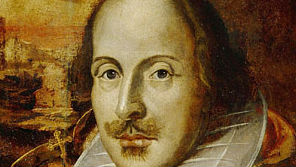Top Five New Ideas About Shakespeare

Once a year, the best minds in Shakespeare studies from both sides of the Atlantic convene for the Shakespeare Association of America conference. Last weekend, I was present for the 39th annual conference, in Bellevue, Washington, to participate in and report on the proceedings. Here are the top five big ideas to come out of the conference:
1. In a rhetorical tour de force, Laurie Maguire taxonomized the various deployments of “&c.” or “et cetera” in the Shakespearean canon and surrounding works, and showed how it altered from an elision of an obscenity—often standing in for female genitalia—to itself an obscenity. I will certainly be a bit more cautious now every time I begin to speak of an “etc.” in class.
2. Another paper by Tiffany Stern connected Shakespeare more tangibly with popular entertainment. Officially sponsored festivities like Bartholomew Fair had substantial influence on early modern theater while the puppet shows featured at such fairs also furnished pastiches of plays from different times and contexts. The influence of Shakespeare even reached Italy in the form of a striking puppet named “Amleto.”
3. James J. Marino likewise gave a fascinating lecture showing how the attempt to reconcile various editions of the plays may obscure the fact that they were actually being revised in the intervening moments. In particular, when the voices of the male actors playing female parts began to crack, the playwright or others could update these roles without having to alter all the cues and force the rest of the players to re-learn the materials.
4. The always insightful Bradin Cormack demonstrated how over-eager emendations of “their” to “thy” in Shakespeare’s sonnets have removed the philosophical import from some of the poems and rendered them overly sentimental.
5. In a seminar that I co-organized with Oliver Arnold on “Liberty and Bondage on the Early Modern Stage,” we talked about the different degrees of freedom contemplated both terminologically and temporally within the early modern period, the relation of bondage to emerging republican discourses of the seventeenth century, and the connections between sexuality and servitude.





